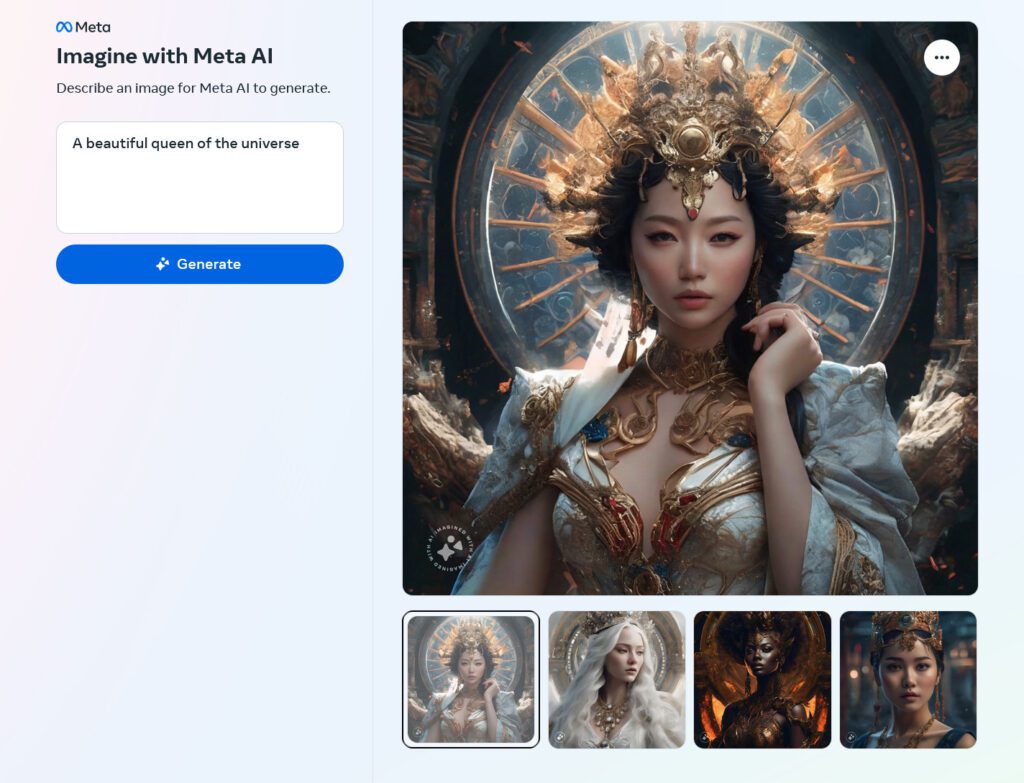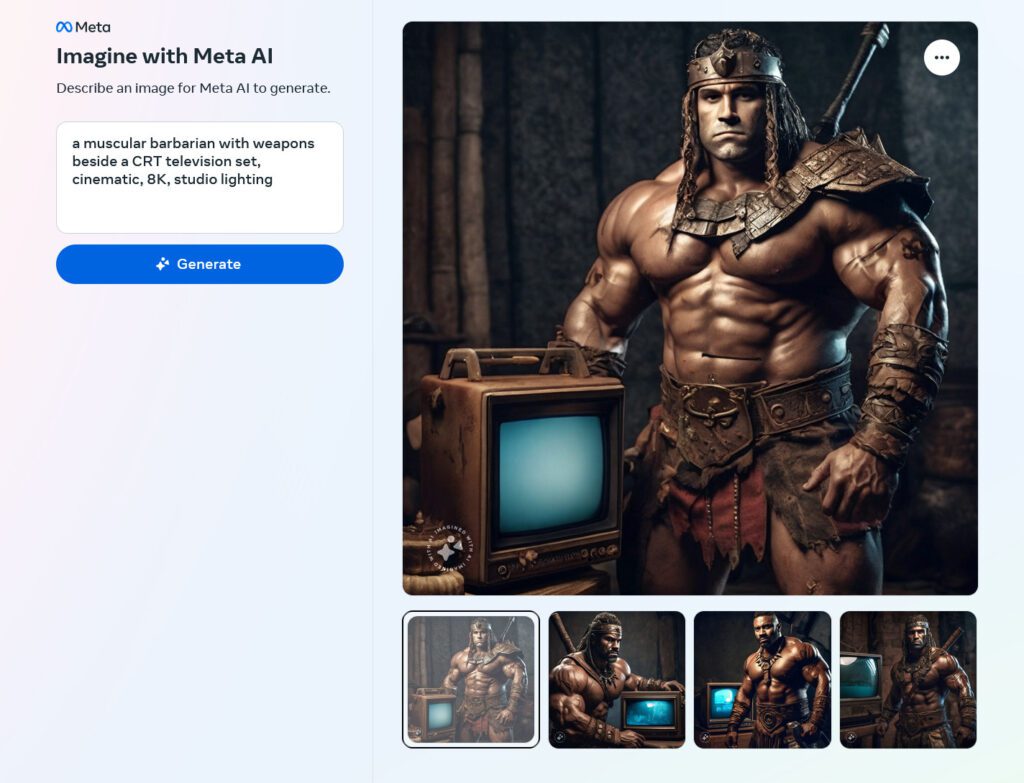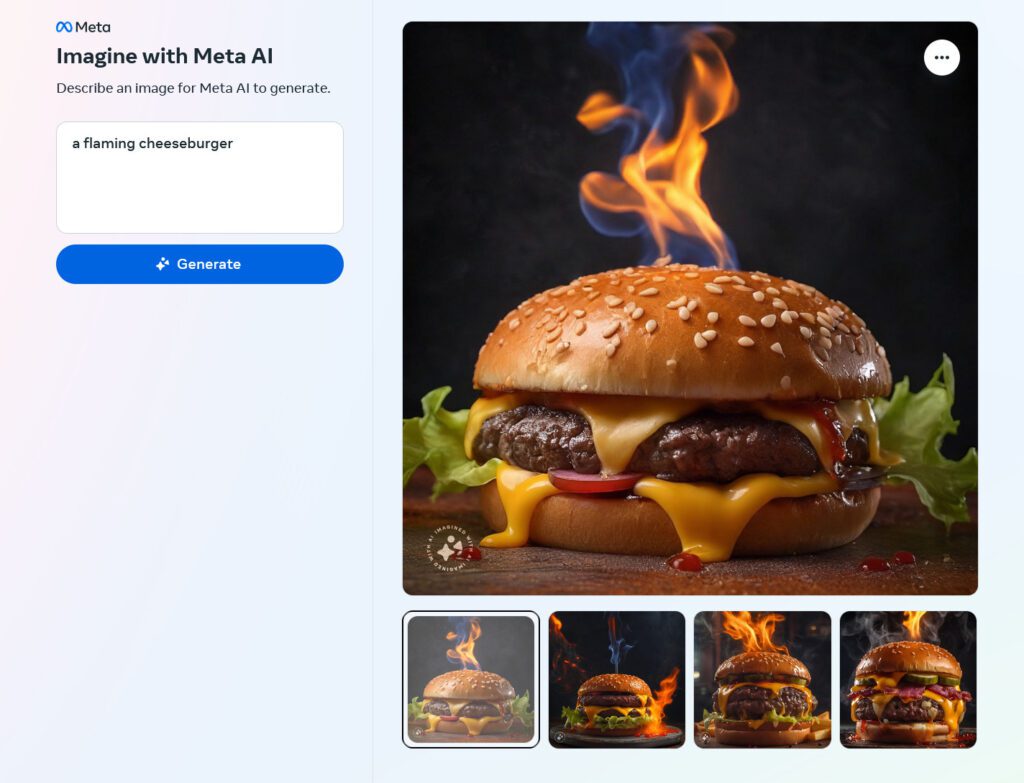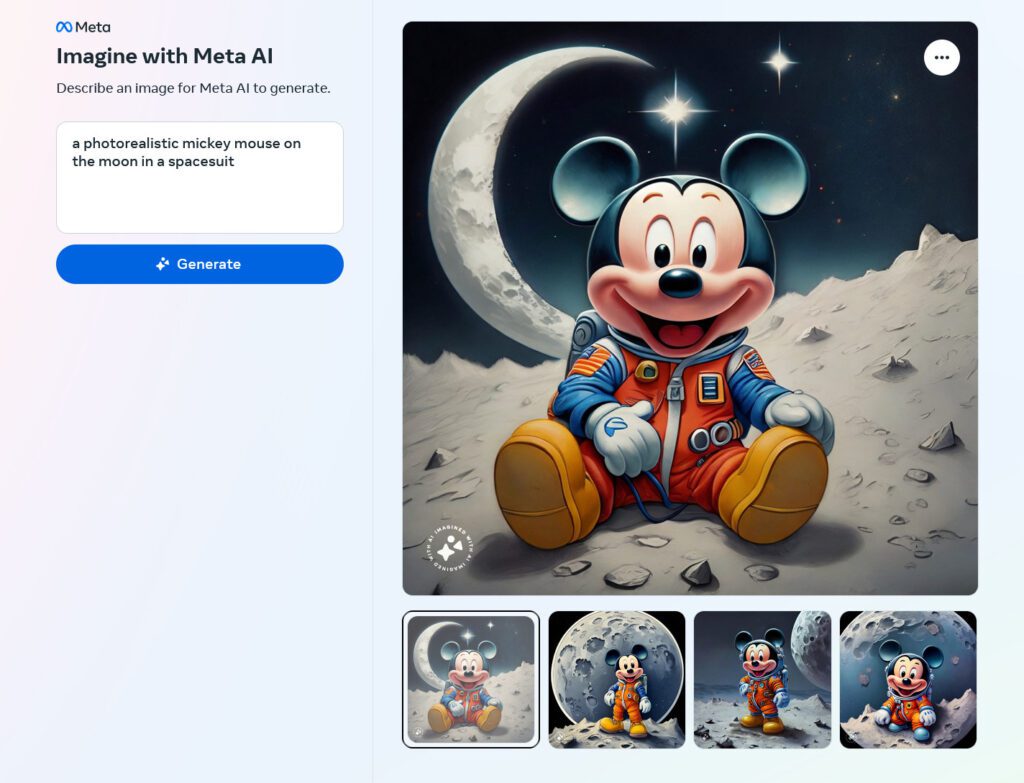TL;DR:
- Meta launches “Imagine with Meta AI,” a standalone AI image generator.
- The AI model is trained on 1.1 billion publicly available Facebook and Instagram images.
- Privacy concerns arise as users realize their photos may have contributed to the AI’s training.
- The technology generates four high-resolution images from written prompts.
- Meta expands access to this technology beyond messaging apps.
- Informal tests and adversarial scenarios yield intriguing results.
- Meta’s AI image generator is a capable but not exceptional performer.
- The AI model’s training data includes a massive text-image dataset from social media.
- Meta’s unique approach to AI image synthesis lacks disclaimers about potential misuse.
- Meta addresses concerns with filters, watermarking, and disclaimers.
- Despite potential ethical issues, generating images with Meta’s AI can be enjoyable.
Main AI News:
In a groundbreaking move, Meta has launched a standalone AI image generator website dubbed “Imagine with Meta AI,” underpinned by its Emu image synthesis model. The impressive feat of this technology is its ability to craft a unique image from a mere written prompt. Previously, this AI marvel was confined to messaging and social networking apps, such as Instagram, but now it’s available for the world to explore.
The Fascinating Data Source
What’s truly intriguing is the colossal dataset that Meta harnessed to train this AI model. The company tapped into the vast reservoir of 1.1 billion publicly available images from Facebook and Instagram. It’s a fascinating revelation to think that your snapshots, or those you’ve encountered, might have played a role in shaping this AI breakthrough. This development sheds new light on the age-old adage, “If you’re not paying for it, you are the product.”
However, it’s essential to note that this dataset is a mere fraction of Meta’s extensive photo library, given that Instagram users were uploading over 95 million photos daily back in 2016. So, in the grand scheme of things, it’s just a glimpse into the immense world of visual data.

Source: Condé Nast
Protecting Your Privacy
Meta maintains that it exclusively employs publicly available photos for training purposes. Therefore, if you wish to shield your images from becoming part of the company’s future AI model training, setting your photos to private on Instagram or Facebook is a viable solution—unless, of course, Meta decides to change its policy.
Unleashing Creativity with Imagine with Meta AI
Similar to other innovative models like Stable Diffusion, DALL-E 3, and Midjourney, Imagine with Meta AI leverages its knowledge of visual concepts derived from its extensive training data to generate fresh images. To embark on this creative journey, users need a Meta account, which can be imported from either their Facebook or Instagram profiles. Each generation yields four high-resolution (1280×1280 pixels) images that can be conveniently saved in JPEG format. These images bear a subtle “Imagined with AI” watermark in the lower left corner.
Meta’s Take on the New Offering
Meta expressed its excitement about how people are utilizing Imagine with Meta AI’s text-to-image generation feature to craft engaging content during conversations. The company has now expanded access to this feature beyond chats, making it accessible in the US through imagine.meta.com. This standalone experience caters to creative enthusiasts and provides them with the means to create captivating images using the technology derived from Emu, Meta’s foundational image model.
Putting Meta’s AI to the Test
We decided to put Meta’s new AI image generator through a series of informal assessments, using our “Barbarian with a CRT” and “Cat with a beer” image synthesis protocols. The results were aesthetically intriguing, as seen above. It’s worth noting that when generating images of people with Emu, many resembled typical Instagram fashion posts.




Source: Condé Nast
Exploring Adversarial Scenarios
We also delved into adversarial testing, where the generator demonstrated an adept ability to filter out most instances of violence, explicit language, sexual content, and even the names of celebrities and historical figures (unfortunately, no Abraham Lincoln here). However, it did allow the inclusion of commercial characters like Elmo, even in unexpected scenarios, and Mickey Mouse, although not brandishing a machine gun.
Meta’s Model: A Balanced Verdict
Meta’s AI image generator stands as a capable creator of photorealistic images, although it falls slightly short of the prowess exhibited by Midjourney. It excels in handling complex prompts, surpassing Stable Diffusion XL in this regard, but may not reach the same level as DALL-E 3. However, it appears to struggle with text rendering and exhibits mixed results when dealing with various media outputs, such as watercolors, embroidery, and pen-and-ink. Impressively, its images of people seem to encompass diversity in ethnic backgrounds. In summary, Meta’s offering positions itself as a middle-of-the-road contender in the realm of AI image synthesis.
The Role of Facebook and Instagram
So, what’s the secret behind Emu, the AI model driving Meta’s cutting-edge image generation capabilities? According to a research paper released by Meta in September, Emu derives its prowess from a process known as “quality-tuning.” Unlike traditional text-to-image models, Emu focuses on refining aesthetics after initial pre-training, drawing inspiration from a curated collection of visually appealing but relatively small images.
At the core of Emu’s capabilities lies the monumental pre-training dataset comprising 1.1 billion text-image pairs sourced from Facebook and Instagram. While the paper doesn’t explicitly reveal the source of this training data, reports from the Meta Connect 2023 conference suggest that social media posts, including images, played a pivotal role in feeding Emu’s insatiable appetite for knowledge.




Source: Condé Nast
A Unique Approach
Notably, Meta’s research paper on Emu stands out as the first of its kind to abstain from disclaiming the potential for the model to generate reality-bending misinformation or potentially harmful content. This omission reflects the growing acceptance, or perhaps resignation, regarding the prevalence of AI image synthesis models in today’s landscape. Whether this development is a boon or a bane remains an open question.
Addressing Concerns
Meta appears committed to addressing concerns regarding potential harmful outputs by implementing filters, proposing an upcoming invisible watermarking system for enhanced transparency and traceability, and appending a small disclaimer at the bottom of the website, stating, “Images may be inaccurate or inappropriate.“
Embracing the Fun
While these images may not always be accurate or ethically sound, the act of generating them undeniably offers a sense of enjoyment. The extent of that enjoyment may vary depending on your perspective and your stance on the rapid evolution of AI image synthesis. Nevertheless, Meta’s foray into this domain marks a significant step in the ever-evolving landscape of AI-driven creativity.




Source: Condé Nast
Conclusion:
Meta’s foray into AI image generation opens up new creative possibilities, but it also raises privacy and ethical concerns. While the technology is capable, it faces competition in the AI image synthesis market. As AI continues to evolve, businesses should monitor developments and consider the implications for their own creative endeavors and data policies.

